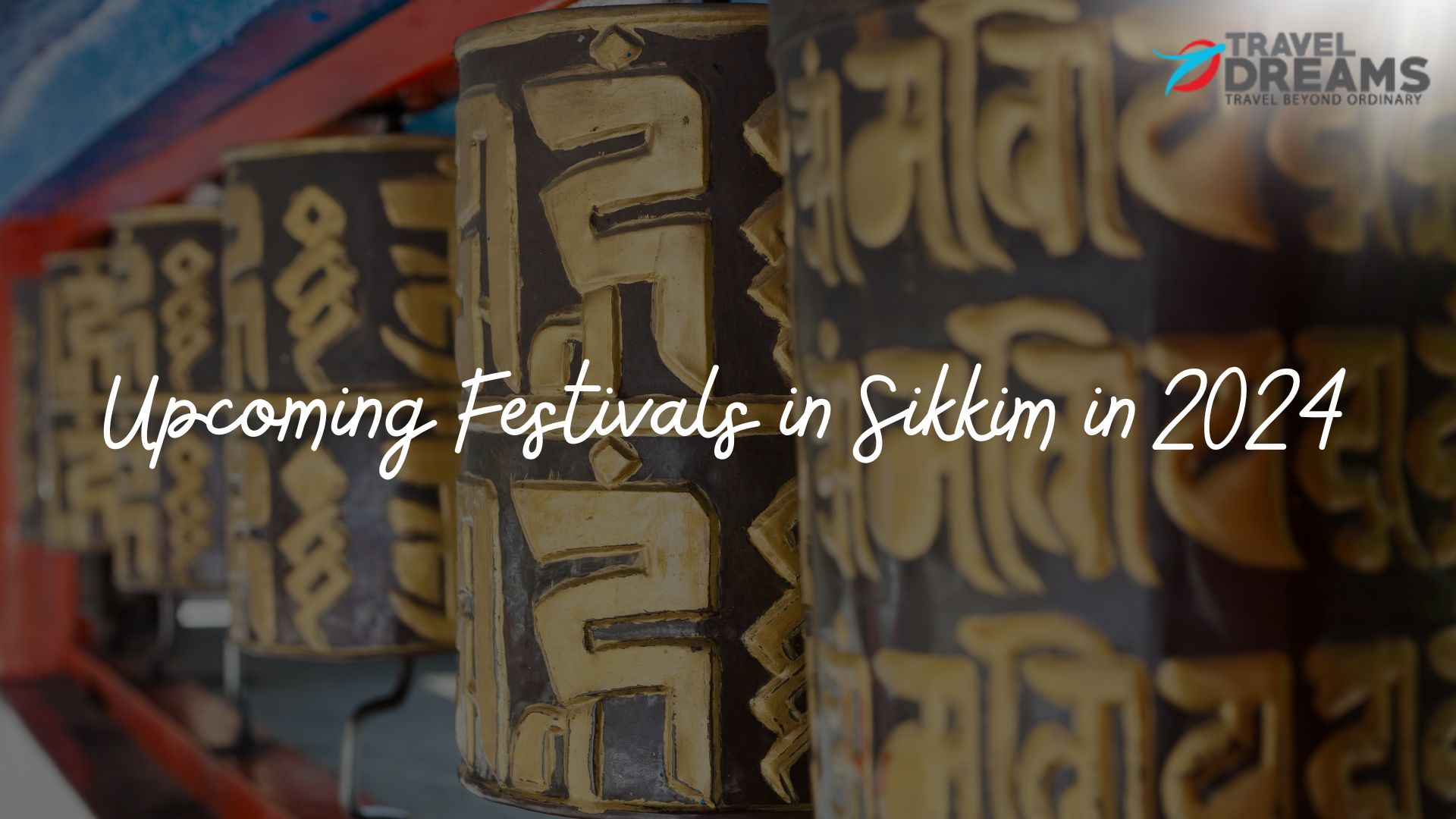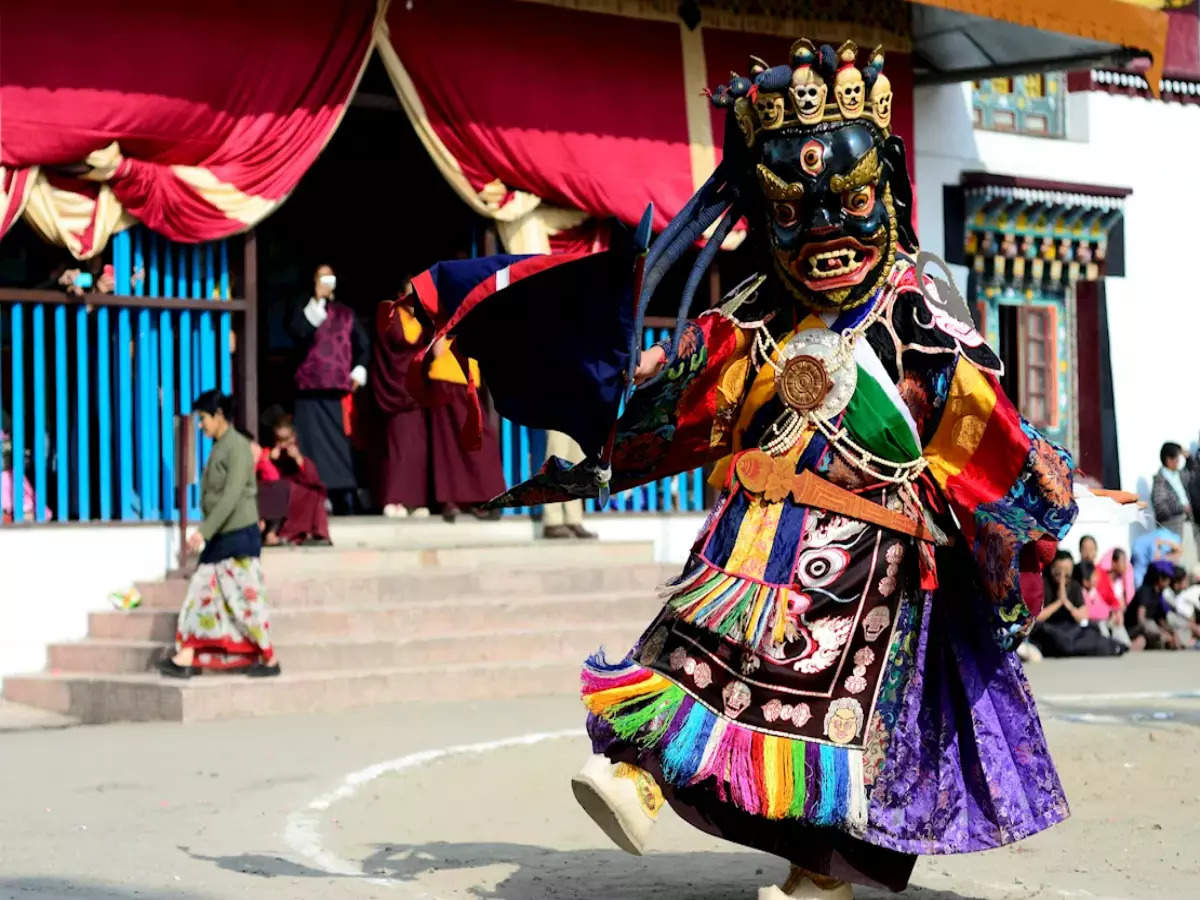
The northeastern Indian state of Sikkim is a mesmerizing land tucked away in the mighty Himalayas. With its snow-capped peaks, pristine lakes, and lush green valleys, Sikkim offers breathtaking natural beauty. However, the state’s true charm lies in its rich cultural heritage and vibrant festivals that celebrate its unique traditions and customs.
As the year progresses, Sikkim comes alive with a kaleidoscope of festivals, each one more colorful and lively than the last. From ancient religious ceremonies steeped in spirituality to joyous folk celebrations, these festivals provide a window into the heart and soul of Sikkim’s diverse communities.
Let’s embark on a journey through some of the most highly anticipated upcoming festivals in Sikkim, where you can experience the state’s cultural richness firsthand.
1. Saga Dawa Festival (May/June)
The Saga Dawa Festival is one of the most significant Buddhist celebrations in Sikkim. It commemorates three pivotal events in the life of Lord Buddha – his birth, his enlightenment, and his death or parinirvana. For the Buddhist community in Sikkim, this festival holds immense spiritual significance.

During Saga Dawa, the monasteries across the state come alive with religious fervor. The sounds of chanting monks, the aroma of incense, and the flickering of butter lamps fill the air, creating an atmosphere of serenity and devotion. Devotees from far and wide gather at these sacred spaces to offer prayers, meditate, and participate in spiritual discourses.
One of the highlights of the Saga Dawa Festival is the sacred Butter Lamp ceremony. In this ritual, thousands upon thousands of butter lamps are lit, their warm glow illuminating the monasteries and symbolizing the dispelling of darkness and ignorance. The sight of these flickering lamps is truly mesmerizing, casting a magical spell over the entire celebration.

Besides the religious ceremonies, Saga Dawa is also a time for community gatherings, where people come together to share meals, exchange blessings, and strengthen their bonds. Traditional dances, music, and cultural performances add to the festive spirit, making this a truly immersive experience for locals and visitors alike.
2. Tendong Lho Rum Faat (July/August)
The Tendong Lho Rum Faat is a vibrant festival celebrated by the Bhutia community in Sikkim. It marks the end of the harvest season and the beginning of a new agricultural cycle, symbolizing the cyclical nature of life and the importance of giving thanks for nature’s bounties.

This lively festival is a true feast for the senses, with a medley of colors, sounds, and flavors. The highlight of the celebrations is the traditional masked dances, where performers adorned in intricate costumes and elaborate masks depict various mythological tales and stories. These dances are not just mere entertainment but a way to preserve and pass down the rich cultural heritage of the Bhutia community.
As the dancers twirl and sway to the rhythmic beats of traditional drums and cymbals, the atmosphere is filled with an infectious energy that is sure to captivate even the most casual observer. The festival also features vibrant folk songs and cultural performances that showcase the community’s traditions and artistic expressions.
In addition to the cultural festivities, the Tendong Lho Rum Faat is also a time for friendly competitions and games. Traditional sports such as archery and stone-throwing take center stage, allowing participants to showcase their skills and engage in friendly rivalries.
3. Pang Lhabsol (August/September)
The Pang Lhabsol is a major Buddhist festival celebrated with great fervor in Sikkim, particularly in the capital city of Gangtok. This grand event honors the guardian deities of the former Buddhist kingdom, paying homage to the spiritual protectors who watch over the land and its people.
The highlight of the Pang Lhabsol festival is the unfurling of a massive silk appliqué known as the Thangka. This intricate work of art, meticulously embroidered with sacred Buddhist symbols and deities, is a stunning sight to behold. As the Thangka is unveiled, the air is filled with the chanting of mantras and the ringing of ceremonial bells, creating an atmosphere of reverence and spirituality.

But the Pang Lhabsol is not just about religious ceremonies; it is also a celebration of Sikkim’s rich cultural heritage. Traditional dances, mask dances, and vibrant cultural performances by monks and local artists take center stage, captivating audiences with their grace, precision, and symbolism.
One of the most iconic dances performed during the festival is the Cham dance, a sacred ritual dance that dates back centuries. Monks clad in intricate costumes and masks depict various deities and mythological figures, their movements synchronized with the rhythmic beats of drums and cymbals. The Cham dance is not just a performance but a spiritual offering, believed to dispel negativity and bring blessings to the land and its people.
As the festival unfolds, the streets of Gangtok come alive with a sea of color and festivity. Stalls selling traditional handicrafts, local delicacies, and souvenirs line the pathways, allowing visitors to immerse themselves in the vibrant culture and take home a piece of Sikkim’s heritage.
4. Losoong (December)
The Losoong festival is a lively celebration of the Lepcha community in Sikkim, marking the end of the agricultural year and the beginning of a new one. This harvest festival is a time of joy, gratitude, and community bonding, where the Lepcha people give thanks to nature and their deities for a bountiful harvest.
As the festival approaches, the villages adorned with vibrant decorations and traditional Lepcha motifs, creating a festive atmosphere that is both visually stunning and culturally rich. The sound of traditional drums and cymbals fill the air, accompanied by the melodic voices of singers chanting age-old folk songs that tell stories of the community’s history and traditions.

One of the highlights of the Losoong festival is the traditional “Sung” dance, a captivating performance that showcases the Lepcha community’s artistic expression. Dancers adorned in colorful attire, adorned with intricate headgear and jewelry, perform intricate steps to the rhythmic beat of drums and cymbals. The dance movements are not just a form of entertainment but a way to convey stories, myths, and cultural beliefs passed down through generations.
During the festival, the Lepcha community also comes together to feast on traditional delicacies, each dish infused with the flavors of the land and the stories of its people. From savory meat dishes to sweet rice-based desserts, the culinary offerings are a celebration of the community’s culinary heritage and their deep connection with nature.
As the festivities reach their peak, the Lepcha elders gather to share tales and wisdom, passing down their rich cultural heritage to the younger generations. This intergenerational exchange is a vital part of the Losoong festival, ensuring that the traditions and values of the Lepcha community are preserved for generations to come.
5. Bhumchu Festival (February/March)
The Bhumchu Festival is a vibrant celebration that showcases Sikkim’s rich Buddhist heritage and the deep reverence its people have for sacred relics and spiritual traditions. Observed in the Tashi Viewpoint area of Gangtok, this festival attracts thousands of devotees from across the region, all eager to pay homage to a sacred Buddhist relic that is displayed for public viewing.
As the festival approaches, the atmosphere in Gangtok is charged with a palpable sense of excitement and devotion. The streets are adorned with colorful prayer flags that flutter in the gentle mountain breeze, while the air is filled with the melodic chanting of mantras and the aroma of incense.

At the heart of the Bhumchu Festival lies the sacred relic, a physical embodiment of the Buddhist faith and its teachings. Devotees from near and far make the pilgrimage to Gangtok, forming long queues to catch a glimpse of this revered object and seek blessings for themselves and their loved ones.
The festival grounds are transformed into a vibrant hub of spiritual and cultural activities. Monks clad in traditional robes perform elaborate rituals and ceremonies, their movements synchronized with the rhythmic chanting of sacred texts. The sound of ceremonial drums and horns adds to the reverential atmosphere, creating a truly immersive experience for all those in attendance.
But the Bhumchu Festival is not just about religious observances; it is also a celebration of Sikkim’s rich cultural heritage. Local artists and performers take to the stage, showcasing traditional dances, music, and theatrical performances that depict stories from Buddhist mythology and Sikkimese folklore.
As the festival draws to a close, the air is filled with a sense of peace and contentment. Devotees leave with a renewed sense of spiritual connection and a deeper appreciation for the rich cultural tapestry that Sikkim has to offer.
These are just a few of the many vibrant festivals that take place in Sikkim throughout the year. Each celebration offers a unique opportunity to immerse oneself in the state’s rich cultural heritage, witness age-old traditions, and experience the warmth and hospitality of the local communities.
From the sacred Saga Dawa Festival to the lively Losoong harvest celebrations, these festivals are not just mere events but true expressions of Sikkim’s cultural identity. They are a testament to the state’s diversity, its deep-rooted spirituality, and its unwavering commitment to preserving its rich heritage for generations to come.
Whether you’re a spiritual seeker, a culture enthusiast, or simply someone seeking an authentic and enriching experience, Sikkim’s festivals promise to leave you with lasting memories and a deeper appreciation for this captivating corner of the Himalayas. So, mark your calendars, plan your journey, and get ready to immerse yourself in the vibrant tapestry of Sikkim’s cultural celebrations.
